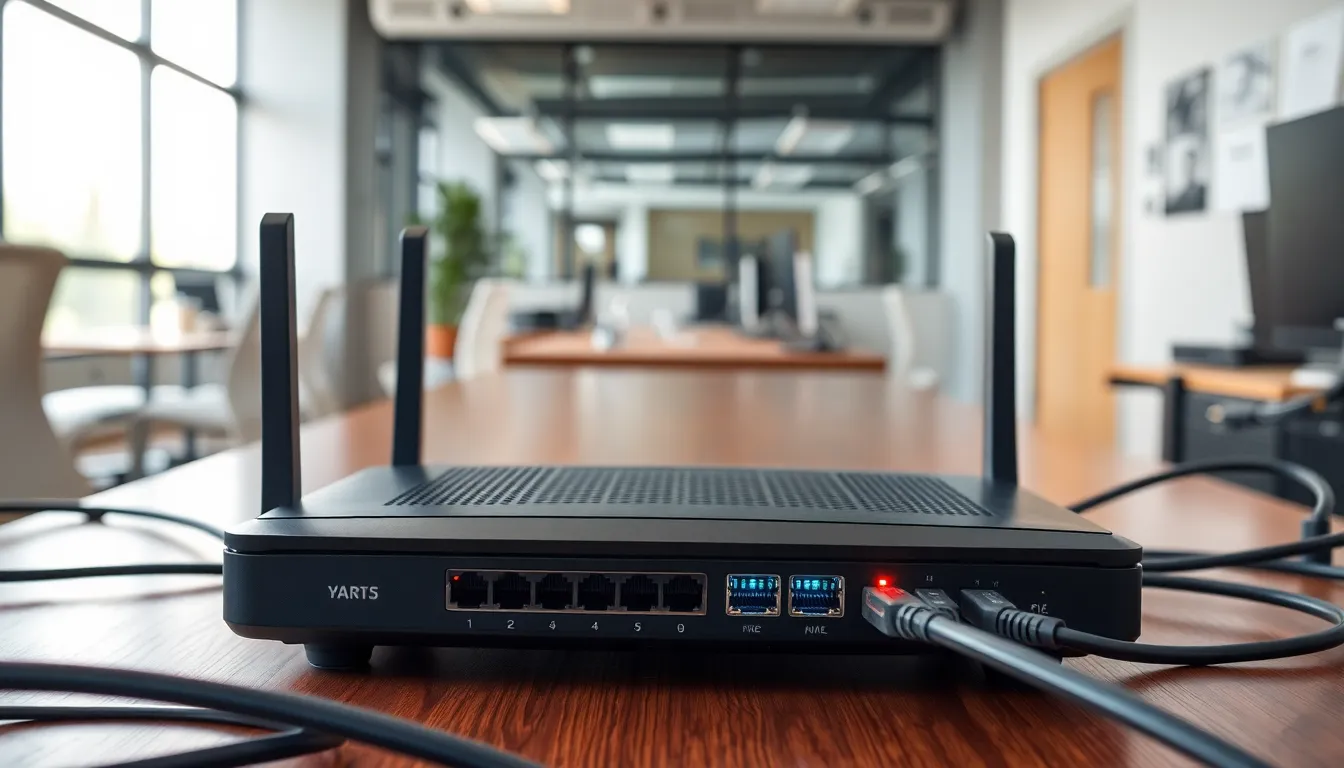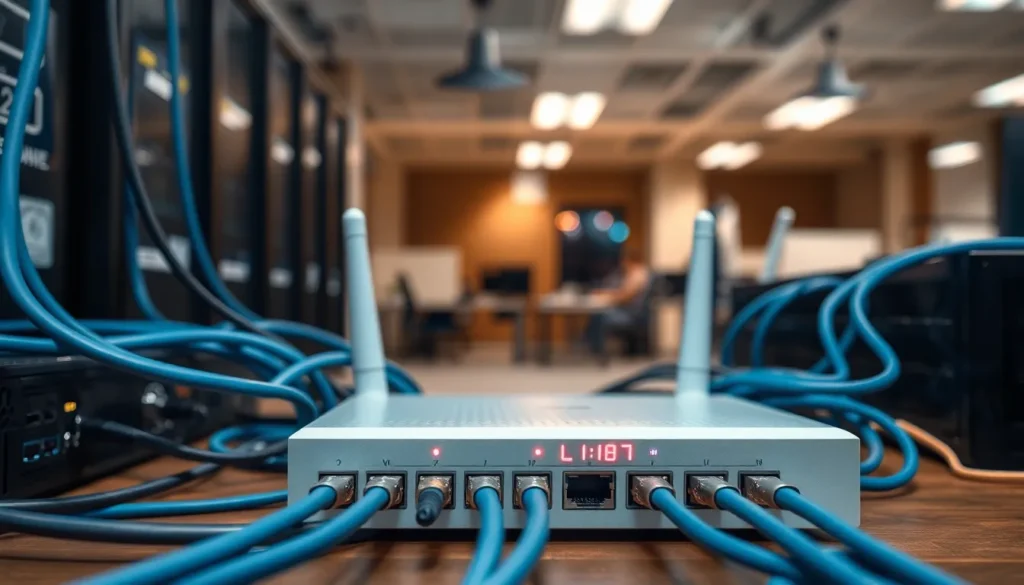Table of Contents
ToggleIn the vast world of networking, IP addresses play a crucial role in connecting devices and facilitating communication. Among these, 10.228.140.9 stands out as a private IP address that often sparks curiosity. Understanding its function and significance can help users navigate their networks more effectively.
This article delves into the intricacies of 10.228.140.9, exploring its uses, configuration, and potential issues. Whether you’re a tech enthusiast or a network administrator, grasping the nuances of this specific IP can enhance your networking skills. Join the journey to uncover the mysteries behind this private address and discover how it impacts your digital environment.
Overview of 10.228.140.9
The IP address 10.228.140.9 belongs to the private IP address range defined by Internet Engineering Task Force (IETF) in RFC 1918. This range allows private networks to assign IP addresses without any need for global uniqueness. Routers do not route these addresses on the public Internet, enhancing security for internal communications.
This specific address can facilitate communication within a local area network (LAN). Devices using 10.228.140.9 can connect to each other efficiently without traversing the broader Internet. It’s frequently used in business environments for network devices like printers or servers.
Network administrators configure 10.228.140.9 in various ways, often through static IP assignment or via Dynamic Host Configuration Protocol (DHCP). Static assignments ensure a device always retains the same IP address, while DHCP can automatically assign it when devices connect to the network.
Potential issues with this IP address often arise from overlapping IP address ranges in complex network setups. Conflicts, such as two devices attempting to use the same IP address, can disrupt communication. Regular monitoring and proper documentation can mitigate these conflicts.
Given its role in internal networking and security benefits, 10.228.140.9 is significant in maintaining efficient and secure communication within private networks.
Potential Uses of 10.228.140.9

The private IP address 10.228.140.9 serves multiple functions within a local area network (LAN). Its applications range from routine networking tasks to considerations regarding security.
Networking Applications
- Device Assignments: 10.228.140.9 often assigns to devices like printers, file servers, or routers in a business setting, facilitating efficient communication among networked equipment.
- Static IP Configuration: Network administrators can configure 10.228.140.9 as a static IP for critical devices, ensuring that they retain the same address even after reboots.
- DHCP Integration: By utilizing Dynamic Host Configuration Protocol (DHCP), 10.228.140.9 allows for dynamic IP assignment within the network, automating the distribution of addresses to connected devices.
- Subnetwork Creation: Network professionals may use 10.228.140.9 to create subnets, segmenting traffic and improving performance within larger networks.
- Remote Access Services: It supports remote access applications, granting employees connectivity to their office network from external locations while maintaining secure data transmission.
Security Concerns
- Unauthorized Access Risks: 10.228.140.9, while private, can still face threats if proper security measures aren’t implemented, such as firewall configurations or access controls.
- Network Scanning Vulnerabilities: Attackers may scan local networks for active devices, including those using 10.228.140.9, seeking to exploit unprotected services.
- IP Conflicts: Overlapping IP address ranges can lead to conflicts within a LAN, manifesting as connectivity issues. Proper documentation of device assignments mitigates this concern.
- Insufficient Monitoring: Failing to regularly monitor network traffic related to 10.228.140.9 increases the risk of unrecognized anomalies, making it essential to utilize tools for tracking activities.
- Data Leakage: Without adequate security protocols, devices assigned the address may become gateways for data breaches, emphasizing the need for strong encryption and access policies.
Benefits of 10.228.140.9
10.228.140.9 offers several benefits within private networks, enhancing functionality and efficiency.
- Facilitates Device Communication: 10.228.140.9 enables seamless communication between devices in a local area network (LAN). This IP address supports efficient data transfer, enhancing productivity for businesses.
- Supports Static IP Assignments: Administrators can configure 10.228.140.9 as a static IP address. This ensures consistent device identification, crucial for servers and printers that require reliable connectivity.
- Integrates with DHCP: 10.228.140.9 can be managed through Dynamic Host Configuration Protocol (DHCP). This flexibility allows automatic IP address assignment, simplifying network management for larger organizations.
- Enables Subnetwork Creation: Network segmentation benefits from 10.228.140.9. Creating subnets improves security and performance by isolating traffic between groups of devices, reducing congestion.
- Enhances Remote Access: 10.228.140.9 can serve as an entry point for remote access services. This facilitates secure connections for remote workers, maintaining efficiency in various operational environments.
- Eases Troubleshooting: The use of 10.228.140.9 simplifies troubleshooting processes. Identifying devices on the network becomes more manageable, leading to quicker resolution of connectivity issues.
- Promotes Security: While security vulnerabilities exist, implementing proper firewall configurations and access controls for 10.228.140.9 strengthens network defenses. Secure configurations mitigate risks associated with unauthorized access.
- Reduces IP Conflicts: Proper management of 10.228.140.9 can minimize IP address conflicts in a network. Organized documentation and monitoring prevent overlapping IP assignments, ensuring stable connections.
- Enhances Network Performance: By utilizing 10.228.140.9 efficiently, organizations can optimize overall network performance. Improved organization leads to better resource allocation and reduced latency.
- Cost-Effective Networking Solution: The use of 10.228.140.9 does not incur additional costs associated with public IP addresses. This allows businesses to leverage private IP space to meet their communication needs without excessive financial burden.
Limitations of 10.228.140.9
Several limitations exist for the private IP address 10.228.140.9 that can impact network performance and accessibility within a local area network.
Accessibility Issues
Accessibility can be a significant limitation of 10.228.140.9, particularly in terms of external network visibility. Devices assigned this IP address can only communicate with others within the same local network. External devices or users must pass through a Network Address Translation (NAT) device to access resources associated with 10.228.140.9. This can introduce latency and complicate remote access configurations. In addition, misconfigured firewalls or NAT settings can further impede accessibility, resulting in difficulties for users trying to establish connections to the services offered by the device configured with this address.
Performance Metrics
Performance metrics surrounding 10.228.140.9 reveal various factors limiting efficiency. Under high traffic loads, devices utilizing this private IP may experience decreased performance due to bandwidth sharing within the same subnet. The address can also lead to increased latency if the network infrastructure is not robust, compounding the impact of concurrent connections or device requests. Furthermore, improper network configuration can exacerbate these performance issues, creating bottlenecks that hinder overall network responsiveness. Regular performance evaluation and optimization of the network environment surrounding 10.228.140.9 can help mitigate these limitations.
The IP address 10.228.140.9 plays a crucial role in enhancing communication within private networks. Its ability to support both static and dynamic configurations makes it a versatile tool for network administrators. By effectively managing this address, organizations can streamline device connectivity and optimize network performance.
However it’s essential to remain vigilant about security and performance issues. Implementing strong security measures and conducting regular evaluations will help mitigate potential risks. Understanding the strengths and limitations of 10.228.140.9 empowers users to create more efficient and secure networking environments. Through careful management and strategic planning, this private IP address can significantly contribute to a robust network infrastructure.



